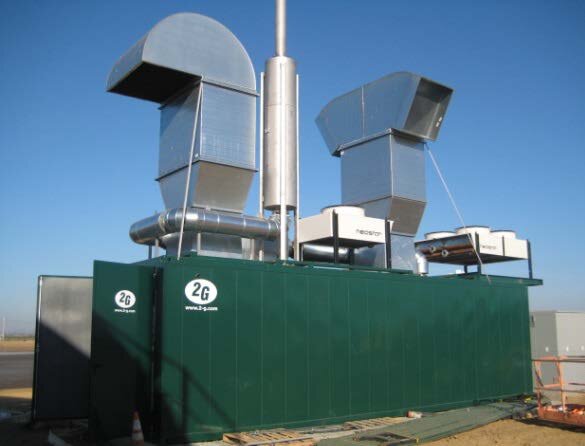New Hope dairy farm goes green with biogas plant and CHP system.
The project reduces greenhouse gas emissions and generates renewable energy for the farm and the grid.
Facts & figures

This project involves the generation of biogas using a continuous stirred tank reactor/digester that was designed and constructed by MT Energie USA, a subsidiary of MT Energie in Germany. The system utilizes a 2G biogas CHP (combined heat and power) module to convert methane to energy. The energy is used in the form of heat in the AD plant as well as the farm buildings and as electrical power sold to the Sacramento Municipal Utility District (SMUD). The new biogas plant helps prevent methane from being released into the atmosphere, making it an eco-friendly solution.
The CHP System supplied by 2G Energy Inc. is an ultra-clean burning and high-efficiency low-NOx, low-CO emissions biogas fueled combined heat and power module. It consists of the 2G agenitor 312 with a thermodynamically optimized MAN core gas engine. The system has a rating of 450ekW/h Electrical Power or 3,735 MW p.a. and a Thermal Power capacity of 500 kWh/th. To meet the strict local air district emission limits, 2G Energy Inc. supplied the CHP module with fully integrated SCR Emissions Reduction Technology, resulting in ultra-low emissions. The CHP controls, including SCR PLC and the utility-grade switchgear, are also provided by 2G. In addition to the CHP unit, 2G supplied the complete gas treatment, including gas dryer/dehumidification treatment, re-heating, and the H2S carbon-based removal system.


